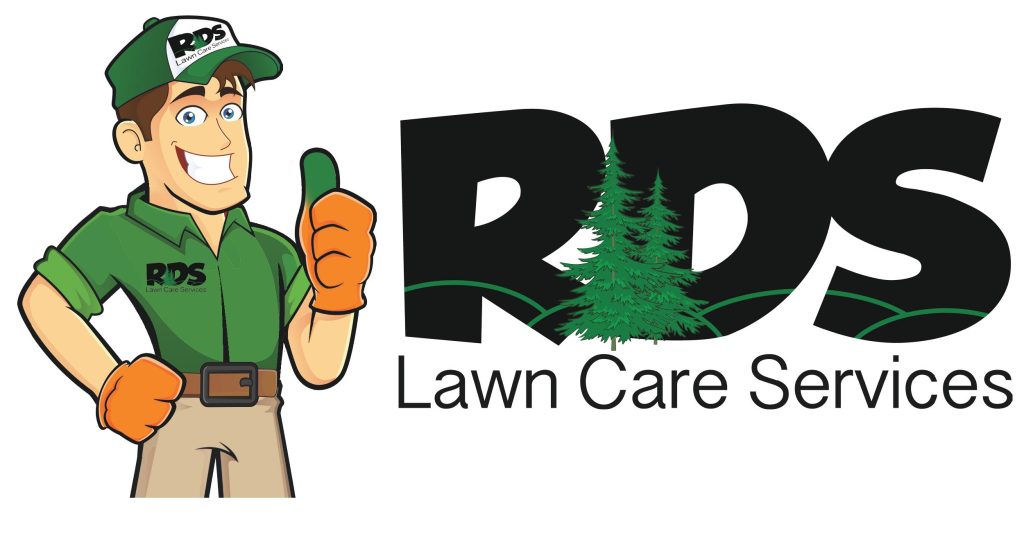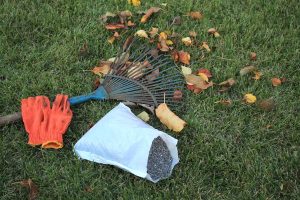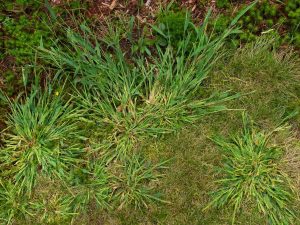What Is Nutsedge and Why It’s a Lawn Care Nightmare
If you’ve ever seen a patch of grass in your yard that seems to grow twice as fast as the rest, chances are you’re looking at nutsedge. Also called nutgrass or bog grass, this invasive weed thrives in moist soil and spreads quickly—often faster than homeowners can mow it down.
At RDS Lawn Care Services, we see nutsedge infestations throughout the Charlotte, NC area every summer and into fall. It’s one of the most common—and most frustrating—lawn weeds we treat. But with the right understanding, treatment plan, and turf management strategy, it can be controlled.
How to Identify Nutsedge in Your Lawn

Nutsedge may look like grass at first glance, but it has some distinctive characteristics that make it easy to spot once you know what to look for:
-
Faster Growth: Nutsedge grows nearly twice as fast as your regular lawn grass, sticking out like a sore thumb just days after mowing.
-
Triangular Stems: If you roll the stem between your fingers, you’ll feel that it’s triangular—not round like most grass blades.
-
Bright Green Color: Nutsedge has a glossy, bright green color that often appears lighter than the surrounding turf.
-
Seed Heads: It produces distinctive yellow or purple seed heads, depending on the species (yellow nutsedge or purple nutsedge).
-
Clumping Pattern: It often grows in clusters or patches rather than spreading evenly like healthy turfgrass.
If you’re seeing these signs, you’re not dealing with normal grass—you’re dealing with nutsedge.
Why Nutsedge Is So Hard to Control
Nutsedge isn’t your typical weed—it’s technically a sedge, meaning it’s part of a different plant family than grasses or broadleaf weeds. That’s what makes it so difficult to manage with standard weed control products.
Here’s why this invasive plant is such a challenge:
-
It Grows From Tubers (Nutlets):
Beneath the soil, nutsedge develops small underground tubers that act like bulbs. Even if you pull up the visible plant, those tubers remain and sprout new plants. -
It Loves Water:
Nutsedge thrives in soggy soil, marshy areas, and over-irrigated lawns. The wetter your yard, the happier this weed becomes. -
It Spreads Quickly:
Each nutsedge plant can produce hundreds of new shoots and tubers. In just a few weeks, a small patch can turn into a large infestation. -
It Outgrows Your Grass:
Because it grows faster and taller than turfgrass, it quickly overtakes healthy areas, stealing sunlight and nutrients.
Why You Should Never Pull Nutsedge
One of the biggest mistakes homeowners make is trying to pull nutsedge by hand. While it might seem like a quick fix, this method actually makes the problem worse.
When you pull on a nutsedge plant, you often break the stem and leave parts of the tuber system in the soil. Those pieces will quickly regrow—sometimes multiplying the problem.
Instead, the correct approach is to spray and kill nutsedge using the right herbicide. Nonselective pulling or mowing won’t help; it only delays real control.
The Best Way to Kill Nutsedge
1. Use a Selective Herbicide
You’ll need a product specifically designed to target sedge weeds. Look for herbicides that list “nutsedge” or “nutgrass” on the label. These products are formulated to attack sedges without killing desirable turf.
At RDS Lawn Care Services, we use professional-grade herbicides that penetrate the plant and travel down into the tubers, ensuring the entire system is killed.
2. Treat During Active Growth
The best time to treat nutsedge is when it’s actively growing—typically during warm, wet months (late spring through summer). When the plant is actively taking in nutrients, it also absorbs herbicides more effectively.
3. Avoid Overwatering
Because nutsedge thrives in wet conditions, controlling irrigation is a major part of the solution. Watering your lawn two to three times per week is plenty. Overwatering creates soft, soggy soil—exactly what nutsedge loves.
4. Maintain Healthy Turf
A dense, healthy lawn makes it harder for nutsedge to establish. Regular fertilization, proper mowing, and consistent turf management go a long way in preventing weed growth.
Why Nutsedge Loves Wet Lawns
Nutsedge is often a symptom of an underlying problem: excessive moisture. Whether it’s from poor drainage, compacted soil, or over-irrigation, too much water creates the perfect breeding ground for this stubborn weed.
You’ll often find nutsedge growing:
-
Along driveways or sidewalks where runoff collects.
-
In low-lying areas of the lawn.
-
Near irrigation heads that oversaturate the ground.
-
In shaded areas that retain moisture longer.
By reducing watering frequency and improving soil drainage, you can make your lawn less hospitable to nutsedge.
Can You Control Nutsedge in the Fall?
While nutsedge is most aggressive during the hot summer months, it doesn’t completely disappear once fall arrives. In fact, early fall is an excellent time to weaken existing nutsedge and prevent it from returning next spring.
As temperatures start to cool, nutsedge begins to slow its growth, but the underground tubers (nutlets) remain alive and ready to sprout when conditions warm up again. By treating in the fall, you attack those plants while they’re still active enough to absorb herbicides—reducing the number of nutlets that will regrow next year.
Why Fall Treatments Matter
-
Extended Control: Applying selective herbicides in early fall can significantly reduce next year’s nutsedge population.
-
Improved Soil Conditions: Fall aeration helps relieve compaction and improve drainage, making your lawn less inviting for moisture-loving weeds like nutsedge.
-
Better Turf Competition: Fall seeding and fertilization strengthen your grass, allowing it to outcompete nutsedge naturally.
In the Charlotte, NC region, late August through October is often the best window for these preventive measures. Even though nutsedge growth slows as nights get cooler, fall is your last chance to disrupt its life cycle before dormancy—and set your lawn up for a healthier, weed-free spring.
Common Nutsedge Mistakes Homeowners Make
f you’re battling nutsedge, avoid these common errors that can make it worse:
-
❌ Pulling It Out by Hand: This spreads tubers and causes regrowth.
-
❌ Using the Wrong Weed Killer: Not all herbicides are formulated for sedges.
-
❌ Ignoring Watering Habits: Overwatering only encourages more nutsedge growth.
-
❌ Skipping Follow-Up Treatments: One spray may not be enough—nutsedge can require multiple applications.
-
❌ Neglecting Lawn Health: Weakened lawns with poor root structure are easier targets for nutsedge and other weeds.
How to Prevent Nutsedge From Coming Back
Once you’ve controlled nutsedge, the key is to stop it from returning. A proactive lawn care plan is essential.
Step 1: Aerate and Improve Drainage
Compacted soil traps water. Annual aeration helps relieve compaction and allows moisture to move deeper into the soil rather than pooling near the surface.
Step 2: Adjust Irrigation
Water deeply but less frequently. Two or three thorough waterings per week are more effective than daily shallow watering.
Step 3: Fertilize and Strengthen Turf
A well-fed, vigorous lawn can outcompete nutsedge and other invasive weeds. Our RDS turf management program provides balanced nutrition and year-round protection.
Step 4: Monitor Hot Spots
Keep an eye on areas that stay damp or low-lying. Early detection and treatment prevent major outbreaks later.
Professional Nutsedge Control From RDS Lawn Care Services
While DIY options exist, professional treatment ensures that the right products and techniques are used safely and effectively.
At RDS Lawn Care Services, we’ve developed proven strategies to eliminate nutsedge and prevent it from returning. Our comprehensive turf care program includes:
-
Targeted Weed Control: Professional-grade herbicides that specifically target sedges.
-
Lawn Fertilization: Strengthening turf to crowd out unwanted weeds.
-
Aeration & Overseeding: Improving soil structure for better drainage and thicker grass.
-
Irrigation Guidance: Helping you manage watering to discourage nutsedge growth.
-
Year-Round Turf Management: Preventive treatments and consistent monitoring for lasting results.
Take Control of Nutsedge Before It Spreads
Nutsedge can frustrate even the most dedicated homeowner, but with the right approach, it doesn’t have to take over your lawn. Remember: don’t pull it, spray it, and control your water.
By combining selective herbicide treatments, proper watering, and healthy turf management, you can finally get ahead of nutsedge and restore your lawn to the lush, uniform green you want.
If you’re tired of fighting this aggressive weed, let the experts at RDS Lawn Care Services help. We’re proud to provide effective nutsedge control and complete turf care programs throughout the Charlotte, NC area.
RDS Lawn Care Services – Charlotte, NC Lawn Care Experts
Serving Charlotte, Gastonia, Belmont, Fort Mill, Pineville, Tega Cay, and surrounding areas.
👉 Learn more about our turf management programs: https://rdslawncare.com
📞 Call us today at 704-822-1625 to schedule your lawn care program.
RDS Lawn Care Services – Saving Lawns Since 1996.



